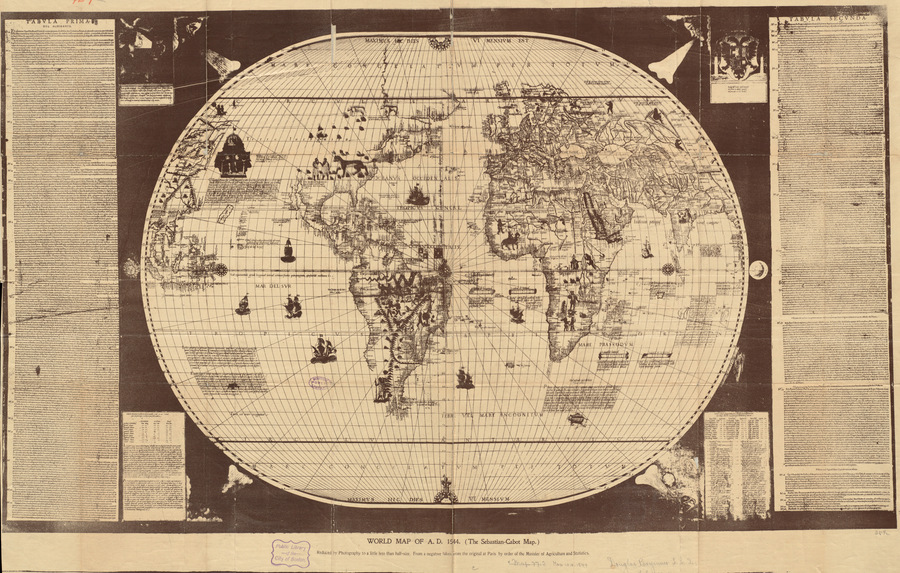Mon Sep 18, 2017 The Cabot Projection
I've added a new projection to map-projections.net… No, sorry, I added a very old projection. It is the Cabot projection created in 1544 by Sebastian Cabot, son of the Venetian explorer Giovanni Caboto (engl. John Cabot).
And that’s pretty much all I know about this projection. I could add thatit has an aspect ratio of 1:1.33, which is is rarely seen these days. But above all, that I like it quite well! I like its peculiar shape.
What I don’t like so much is the aspect ratio and the resulting vertical stretch of the middle latitudes. Fortunately, both shortcomings can be resolved by a simple modification: I have simply stretched the projection horizontally, and after a few attempts I decided to use a factor of 1.35, which corresponds to an aspect ratio of about 1:1.8. The equatorial regions are still stretched a little bit, but on the whole this result seemed more beautiful than, for example, at a ratio of 1:2.
And although the world certainly doesn’t need any further
pseudocylindrical projections, I couldn’t resist the
temptation to add this modification to the website as well. Of
course I would have liked to call this variant Cabot-Jung… ;-)
But honestly, in my opinion a simple stretch doesn’t
reach the necessary threshold of originality to give
the design my own name. So it is simply listed under the
name Cabot modified.
Finally, I would like to present a reproduction of the original map of 1544. Interestingly, it is stretched vertically even more, its aspect ratio is about 1:1.27 – no idea how to explain it.

 Licensed under CC BY-NC-SA.
Licensed under CC BY-NC-SA.Map reproduction courtesy of the Norman B. Leventhal Map Center at the Boston Public Library [ Source ]
Comments
One comment
Peter Denner
A standard parallel of 75 degrees for the equirectangular projection would give an aspect ratio of 1.26, so that could be where the approximately 1.27 comes from.



 Except where otherwise noted, images on this site are licensed under
Except where otherwise noted, images on this site are licensed under
Tobias Jung
I don’t know how it’s constructed. Using the average of Apian II and the equirectangular projection, I couldn’t get an exact match so far, but it’s really close. Well spotted! :-)
Peter Denner
Tobias Jung
They match exactly.
Peter Denner